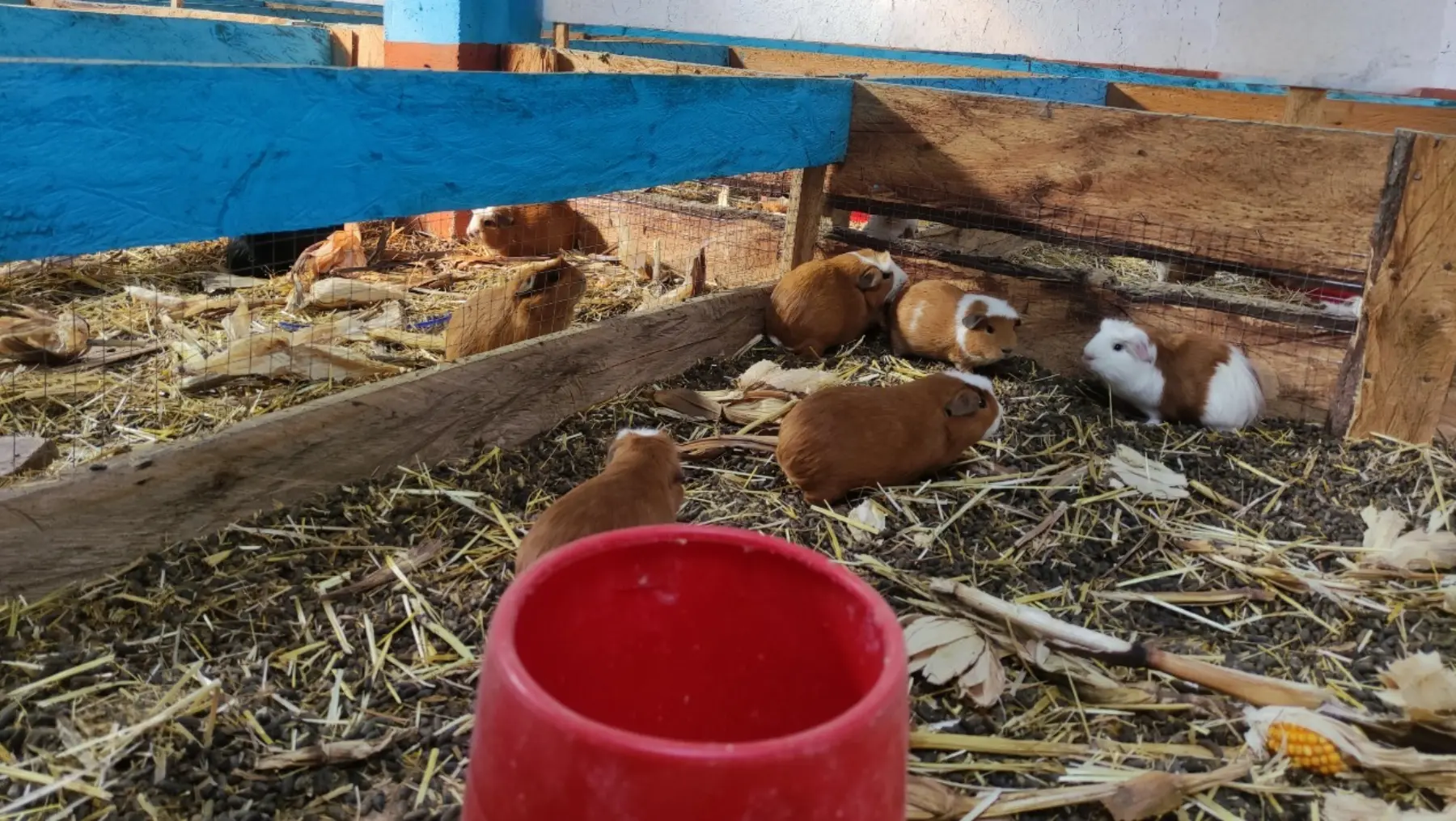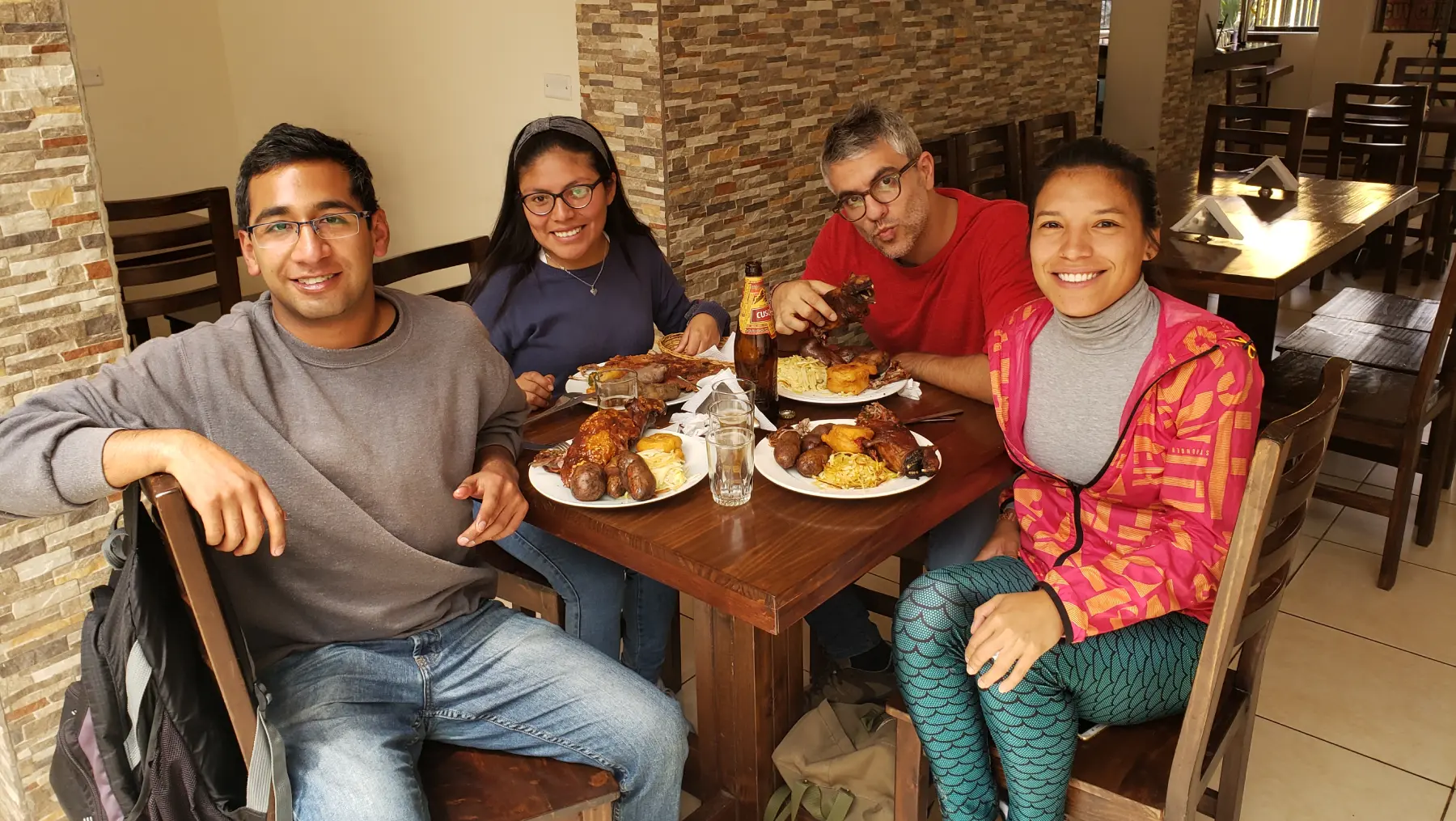Hey, fellow foodies and travelers!
When a traveler arrives in Peru searching for authentic flavors, it’s only a matter of time before they hear about cuy. This small animal, also known as guinea pig, isn’t just a typical dish in Peruvian cuisine it holds deep cultural and symbolic value in the Andes.

The History and Tradition of Cuy
In the Andes, guinea pigs have been raised and consumed by local communities for over 5,000 years. Pre-Incan civilizations considered them a sacred food source, and during the time of the Inca Empire, they were part of religious rituals and daily life.
You can find figures of cuy on ancient pottery, confirming they weren’t seen just as food, but as beings with a spiritual role. Even today, in some Andean communities, guinea pigs are part of healing rituals and family celebrations.

Cuy in Peruvian Cuisine
These days, guinea pig in Peru is prepared in different ways, depending on the region:
- Cuy al horno (Cusco and Ayacucho): Served whole, roasted until golden, and accompanied by native potatoes and a fresh salad.
- Cuy chactado (Arequipa): Fried and pressed until incredibly crispy—this is one of the most famous versions.
- Cuy frito (Puno and Cajamarca): Pan-fried until golden, often with local herbs and traditional sides.
Each recipe reflects the creativity of Andean families and tells the story of its region. For travelers, trying cuy is a flavor journey that connects you to centuries of history.

Cuy as a Cultural Experience
Beyond the plate, guinea pigs are part of daily life for many Andean families. They are raised at home, fed natural grasses, and represent a source of economic sustenance. Their husbandry is tied to values of community, tradition, and respect for nature.
During patron saint festivals and religious celebrations, cuy often takes center stage. It’s a symbol of family unity and gratitude for the land. For a traveler, tasting it on these occasions is a chance to participate in a living custom that connects generations.
Where to Try Cuy in Peru
Visitors can enjoy this unique dish in several tourist destinations:
- Cusco: Many restaurants offer cuy al horno as a specialty welcome dish.
- Arequipa: Cuy chactado is a must-try in the traditional picanterías.
- Ayacucho and Puno: Ideal for those seeking a closer connection to traditional Andean cooking.
- Food Festivals: At events like the Mistura festival (or its modern equivalents), cuy is one of the most sought-after dishes by travelers.
For those on food tours, a cuy tasting is often included as a key part of the cultural experience.
Cuy and Culinary Tourism
Peru has established itself as a world-leading culinary tourism destination, and cuy is one of its star dishes. Trying it allows a traveler to understand that Peruvian cuisine isn’t just delicious—it’s also incredibly diverse and deeply connected to the identity of each region.
Trying cuy isn’t simply a meal; it’s a lesson in living history, an insight into the Andean worldview, and an experience no curious traveler should miss.
The Takeaway: An Authentic Experience
Traveling to Peru means discovering a country of incredible flavors, and cuy is one of its most iconic. To taste this dish is to connect with the tradition of the Andean people, to feel the warmth of their customs, and to take part in a heritage that has been passed down from generation to generation.gustar este plato es conectar con la tradición de los pueblos andinos, sentir la calidez de sus costumbres y participar de una herencia que ha pasado de generación en generación.
Contact Us:
For more information, please contact us DREAMY TOURS, we will be happy to answer all your questions about Peru, Bolivia and Chile.
We specialize in tours and travel packages as a Travel Agency. If you need information, please contact us.
We offer tours, excursions – Peru – Bolivia – Chile:










